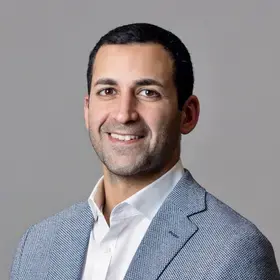by Juli Spencer, ’22SPS, Executive M.S. in Strategic Communication
Evidence links heavy usage of screens to impaired attention, reduced numerical processing capacity, changes in social cognition, and reduced right prefrontal cortex excitability. Unfortunately, screen use is up and doesn’t appear to be decreasing anytime soon.
According to the Proceedings of the National Academy of Sciences, “American teenagers (13–18 years old) report engaging with media and technology for almost nine hours every day, not including time spent with media at school or for homework.”
Apps are intentionally designed to keep people engaged. Sean Parker, the founding president of Facebook, has said, “It’s a social-validation feedback loop … exactly the kind of thing that a hacker like myself would come up with, because you’re exploiting a vulnerability in human psychology. The inventors, creators—me, Mark [Zuckerberg], Kevin Systrom on Instagram, all of these people—understood this consciously. And we did it anyway.”
With attentional engagement a key metric for apps, adolescents are vulnerable. However, teachers, administrators, and school counselors can take steps to limit negative effects with innovation, healthy habits, and knowledge. We may have to accept increased screen time as a fact of life, but we can influence the impact it has on our students.
Here are three effective ways to help students balance their digital use and avoid harmful, addictive patterns.
Promote better online channels
Not long ago my kids began playing a new game incessantly. Curious, I plopped next to my son and took a turn at Geometry Dash, the latest trend sweeping across his teen/tween peers. Pretty soon I wanted to hurl the phone at the wall. I don’t consider myself reaction-time-challenged. At least I didn’t until that moment. I’m decent at Tetris; I can catch stuff people throw at me. But this was next-level. And yet somehow my kids could clear the screen. All those years of games like Temple Run and Subway Surfer had trained them for this. Maybe there was something to be gained from nonacademic screen time after all.
According to Oxford’s Millennium Cohort Study, “social media and internet use were strongly linked to mental health issues, while TV and gaming were only weakly linked.” Not all screen time is equal. Certain games and apps have been created specifically to improve cognitive function. Kids who stick to Nitro Type and Duolingo are likely much better positioned than their Grand Theft Auto– or C.O.D.–addicted counterparts. Rather than expounding on the merits of parental restrictions, search for healthy influencers who fuel your students’ interests—from cooking to BMX, or even pygmy chameleons!
Champion physical activity and sleep
A recent study published in The Lancet Child & Adolescent Health demonstrates that increased time spent on physical activity, and decreased time on electronic devices, promotes healthier mental well-being. Children passionate about activities like team sports or mountain biking are likely to spend less time on their screens. The more advanced at that activity they become, the more time they’ll spend on it, potentially replacing an unhealthy habit with a healthy one: a great tactic to break the screen time cycle.
It may go without saying that increased physical activity can improve sleep. Sleep can also be an effective intervention for excessive screen time. According to Harvard Medical School: “Many teens who stay up late texting are not only getting less shut-eye, they’re also lacking the deep REM sleep essential for processing and storing information from that day into memory.” Sleep is critical for bodies and minds to recharge and restore, but habits like scrolling through feeds at night lead to fewer hours of sleep and, in turn, brain fog. Sometimes the hour before bed is the first chance kids have had to collect their thoughts all day. Instead of engaging with something minimally stimulating, like a lighthearted TV show or a “mindless” game, they fall victim to notifications signaling to check their social media. Hours later they’re still scrolling through emotionally triggering content.
Talk to students and parents about this struggle. Encourage them to come to mutually agreed-upon solutions like turning off the Wi-Fi after a certain hour or leaving electronics in a central location past 9 p.m. There are many ways to address the challenge—but do address it. Classrooms across the land are poised to reap positive gains from the many benefits of improved adolescent sleep.
Strengthen executive function
Not only are platform user interfaces intentionally triggering, but the content is often emotionally fraught in order to persuade and engage, leading to overstimulation of the amygdala. Psychologist Daniel Goleman has termed the way the amygdala responds to stress by disabling the frontal lobes the amygdala hijack. When this happens, a fight-or-flight response is activated, and rational responses are disabled. We have a powerful tool that works against such mind games. Knowledge.
Social media moguls may have figured out how to hijack our kids’ amygdalas, but we can outsmart existing systems. It’s time to hack the hackers right back. The core skills of executive function are working memory, self-control, and cognitive flexibility. These break down further into hot and cold skills. The hot ones are activated when a person is in a triggered emotional state.
According to a study by the National Center for Biotechnology Information’s Frontiers in Psychology, “adolescents with impaired or poor hot executive function tend to be more impulsive and sensitive to risky activities, further increasing their vulnerability to emotional challenges.” Strengthening these skills by repeatedly identifying goals, planning, monitoring progress, and adjusting behavior according to situational changes enables better self-management when emotions ramp up. Once these processes are habituated, an amygdala hijack requires a lot more oomph.
A well-known Berenstain Bears book called Too Much Birthday depicts what happens when Sister Bear’s family goes full-throttle on a birthday extravaganza and it completely backfires. Ultimately they deem the situation “Too Much Birthday.” It’s a parable about well-intended loved ones and too much of a good thing. When it comes to today’s digital media, it seems we’ve wound up with Too Much Amygdala. It all may have been exciting at the outset, but once again moderation reigns supreme.
Screens have become vehicles for bombarding young brains with too much too soon. Yet screens can also be vehicles for good. As with food, sticking to the healthy stuff (and not too much) instead of the junk takes serious effort, but we can help families better manage digital media. We can empower students to make informed decisions by encouraging better channels, healthy physiological routines, and fortified executive function. Adolescents can better balance their own digital use if we give them proper scales with which to measure that use in the first place. These are arguably the most crucial lessons educators can teach at this moment. You can lead the charge on screens—it’s time.
References
https://journals.plos.org/plosone/article?id=10.1371/journal.pone.0180094
https://www.pnas.org/doi/10.1073/pnas.1611612115
https://www.thelancet.com/journals/eclinm/article/PIIS2589-5370(18)30060-9/fulltext
https://hms.harvard.edu/news/screen-time-brain
https://www.healthline.com/health/stress/amygdala-hijack#takeaway
https://www.ncbi.nlm.nih.gov/pmc/articles/PMC5767838/
https://www.nytimes.com/2022/04/23/health/mental-health-crisis-teens.html
https://www.psychologytoday.com/us/blog/our-changing-culture/202204/is-screen-time-bad-teens


